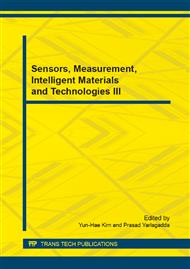p.38
p.42
p.46
p.50
p.56
p.61
p.65
p.70
p.74
A QCM Immunosensor for Rapid Determination of Ractopamine in Food Based on Enzyme-AuNPs for Signal Amplification and Magnetic β-Cyclodextrins for Extraction
Abstract:
An enzyme amplified immunosensor for highly sensitive detection of Ractopamine (RAC) in foodstuff was developed based on quartz crystal microbalance (QCM). The high sensitivity was achieved by enzyme-AuNPs signal amplification strategy and magnetic β-cyclodextrins (β-CD) enrichment capacity. The novel QCM immunosensor which combines with the advantages of high selectivity of immunoassays and the high sensitivity of QCM has been developed for the determination of trace residues of RAC in food production. Under optimum conditions, the differences in the frequencies (∆f) of the QCM were proportional to the concentration of RAC over the range from 0.01 to 10 ng mL-1. The minimal detection limit was 0.01 ng mL-1. Due to its high sensitivity, acceptable stability and good selectivity, the immunosensor realized reliable quantification of RAC in real foodstuff. The proposed project has the potential to become a successful on-site screening method in food safety.
Info:
Periodical:
Pages:
56-60
Citation:
Online since:
March 2015
Authors:
Price:
Сopyright:
© 2015 Trans Tech Publications Ltd. All Rights Reserved
Share:
Citation:


